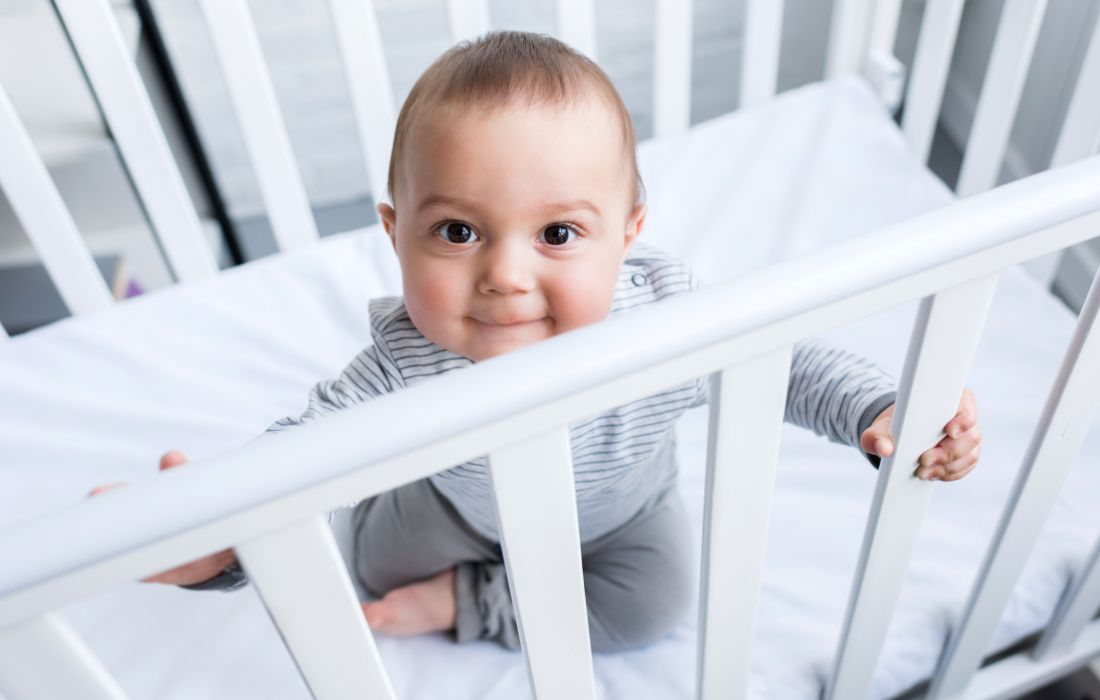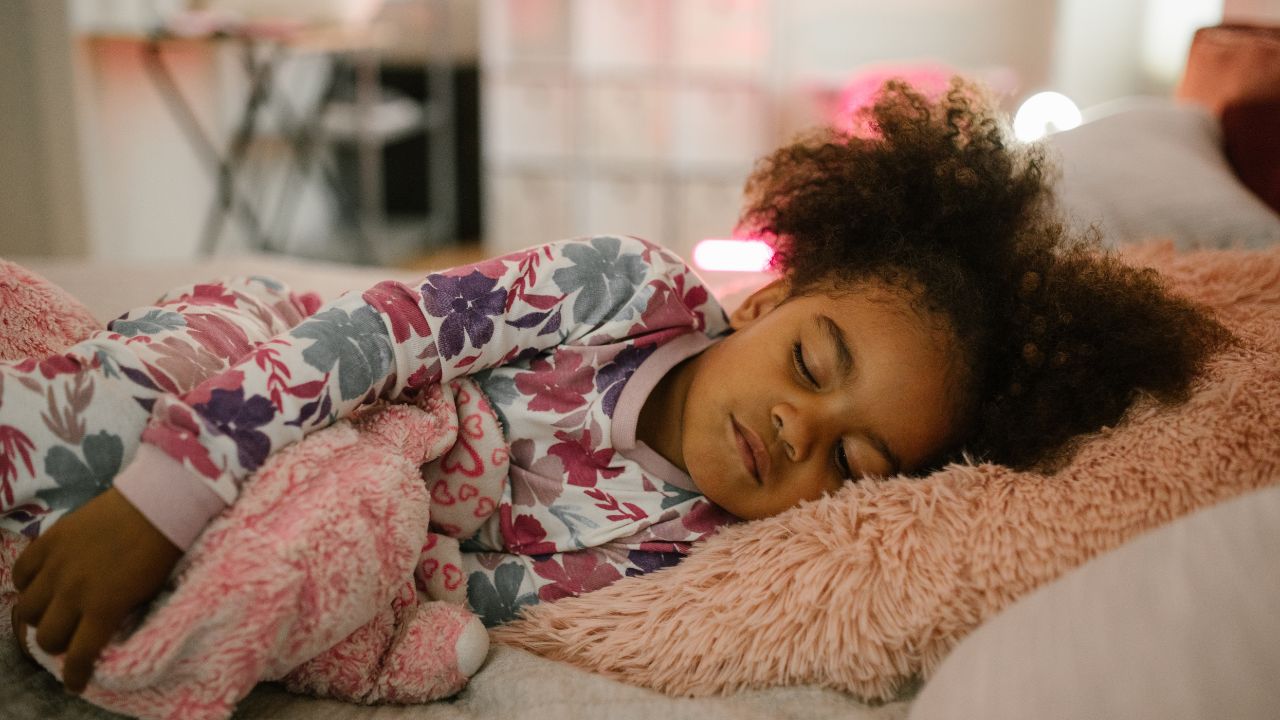 Here are some tips for baby safety, specifically safe baby sleep. Most of the information is from the American Academy of Pediatrics and First Candle. I’d like to emphasize that this advice is primarily for healthy infants. Always talk to your doctor, particularly if your child was premature or has any health problems or unique circumstances. Recommendations have changed over the years as we have learned more about child safety and development, and they may well change again, so revisit safety issues with your doctor frequently. You may see all kinds of contradictory information on parenting and health Web sites. A good place to sort it all out is the American Academy of Pediatrics parenting corner.
Here are some tips for baby safety, specifically safe baby sleep. Most of the information is from the American Academy of Pediatrics and First Candle. I’d like to emphasize that this advice is primarily for healthy infants. Always talk to your doctor, particularly if your child was premature or has any health problems or unique circumstances. Recommendations have changed over the years as we have learned more about child safety and development, and they may well change again, so revisit safety issues with your doctor frequently. You may see all kinds of contradictory information on parenting and health Web sites. A good place to sort it all out is the American Academy of Pediatrics parenting corner.
“Back to Sleep.”
Always place your baby on his or her back to sleep—both at naps and at night. Side and tummy positions are not safe. This is absolutely essential to reduce the risk of sudden infant death syndrome. Once your baby rolls over consistently backward and forward you won’t be able to keep him on his back all the time, unless that’s his preferred sleeping position, so make sure he has enough room to move around and no unsafe items in his crib. Unsafe items include quilts, loose blankets, pillows, soft or pillow-like bumpers, stuffed animals or toys with pieces that can come off, pillows, and soft bedding.
Baby sleeps on a firm surface.
This could be a safety-approved crib mattress, covered by a tight-fitting crib sheet. Never place your baby to sleep on pillows, quilts, sheepskins, or other soft surfaces. Infants should never sleep or nap on adult beds, waterbeds, sofas, or soft mattresses.
Be careful about buying secondhand.
Think twice about using hand-me-down cribs, bassinets, co-sleepers, even if they’ve been in the family for years. Safety standards have changed, and some products have been recalled or taken off the market. Contact the Consumer Product Safety Commission at 1-800-638-2772. Consumers Reports has also reminded parents that co-sleepers have not been tested as of this writing.
Beware of ‘magical’ gadgets.
You’ll see numerous devices and gadgets on the market designed to maintain sleep positions, but they have not all been tested for safety and efficacy and are not recommended. Generally, avoid them. If you have some specific concern about your child’s sleep position or movement, talk to your doctor.
Make sure the crib where baby sleeps is safe.
Cribs should be placed in a warm, dark part of the room, away from windows. Blankets should not dangle from the side of the crib, and wall hangings need to be well out of the baby’s reach so he can’t pull them down on himself. Keep soft objects, toys, and loose bedding out of your baby’s sleep area. Don’t use pillows, blankets, quilts, sheepskins, or soft or pillowlike crib bumpers in your baby’s sleep area (other than the small blanket you swaddle a newborn in, and that should be away from the face, as these all pose a risk of suffocation.
At six months, remove all crib mobiles or toys attached to crib sides.
Once the baby can pull and grab, they become a hazard. I like keeping mobiles away from the crib all the time; use it someplace where she’s awake. Make the crib or sleep area “boring” as well as safe.
Do not let your baby overheat during sleep.
Keep room temperatures at what would be comfortable for a lightly clothed adult. Once you stop swaddling your baby, use a sleep sack or blanket sleeper. If the bedroom is cooler, use two sleep sacks or place one over the pajamas or onesies.
Do not smoke around your baby.
Remember that the American Academy of Pediatrics strongly recommends that you do not smoke around your baby and should not allow anyone else to smoke around your baby. Smoking exposure may increase the risk of SIDS and other respiratory illness.
Make sure baby’s sleep location is safe.
The American Academy of Pediatrics recommends you not let your baby sleep in a bed or on a couch or armchair with adults or other children. But it’s fine to have an infant close by in your room, particularly in the early months. See my advice on roomsharing in Chapter 12 for more information. If you bring your baby in bed with you to breastfeed, put him back in a separate sleep area, such as a bassinet, crib, cradle, or a bedside co-sleeper (infant bed that attaches to an adult bed) when finished. When baby starts to roll and move in his sleep, graduate to a standard crib for better—and safer—sleeping. Beds that are perfectly safe and comfortable for adults or older children can be very hazardous for babies. Soft bedding and other items in the adult bed increase the risk of SIDS and suffocation, especially for young babies. A baby or small child can also fall from the bed or get trapped between the mattress and the structure of the bed (the headboard, footboard, side rails, and frame), between the bed and the wall or nearby furniture, or even between railings in the headboard or footboard. Fatalities have been documented.
If you do choose to have your baby in the family bed, understand all the bedsharing safety rules and always follow them. Parents who do have a baby in bed with them for even part of the night must never smoke or use substances, such as alcohol or drugs (including prescription drugs that make you sleep heavily), that may impair arousal, making them less aware of their baby’s needs or position in the bed.
Consider a pacifier.
Pacifiers can significantly reduce the risk of SIDS. They also soothe infants. Talk to your own pediatrician about when to start—and stop—the pacifier. Many doctors advise using a clean pacifier when putting the infant down to sleep, although you shouldn’t force the baby to take it. If you are breastfeeding, wait about four to six weeks before introducing the pacifier. Many parents stop the pacifier after six months, so the baby doesn’t get so accustomed to falling asleep with something in his mouth. (Medical advice has changed frequently over the years, so make sure you raise this topic with your doctor and check back as the child gets older.)
Was this article helpful to you? Please tell us by commenting below! For more baby, toddler, and family sleep tips and tricks, please subscribe to The Sleep Lady’s Facebook, Twitter, Pinterest, Google+, and YouTube channel! If you are looking for more sleep content, please check out Get Sleep Now-an exclusive members-only area designed to provide in-depth help and support during your sleep coaching experience.







